Bristlecone Pine
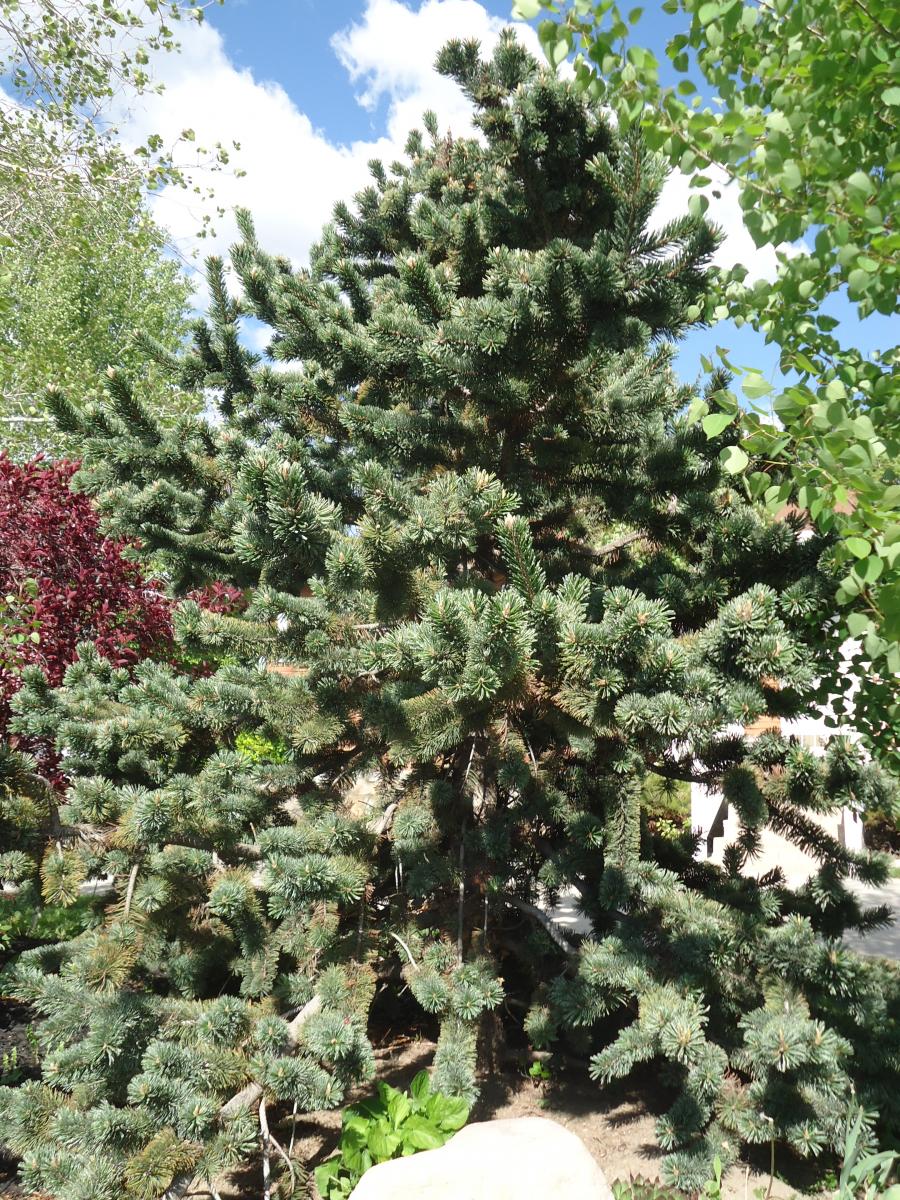
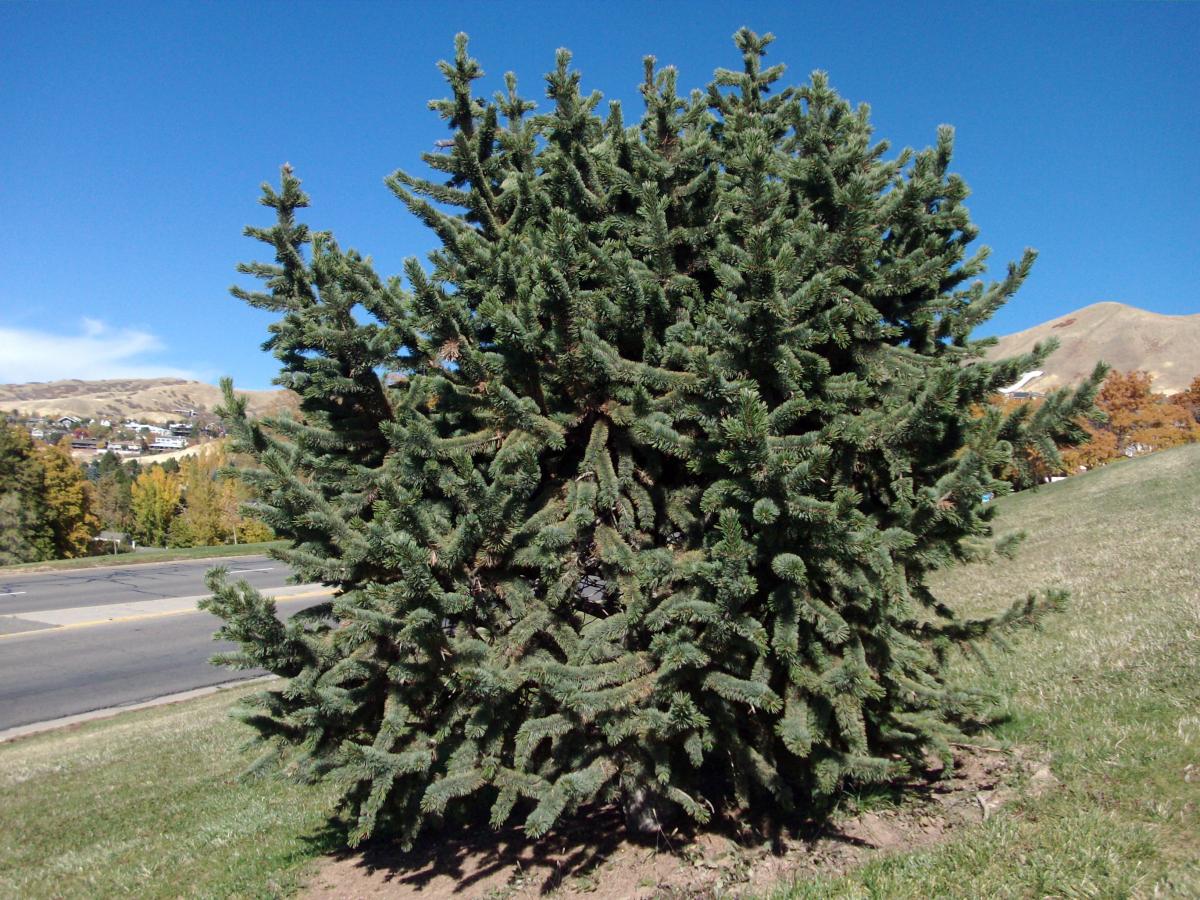
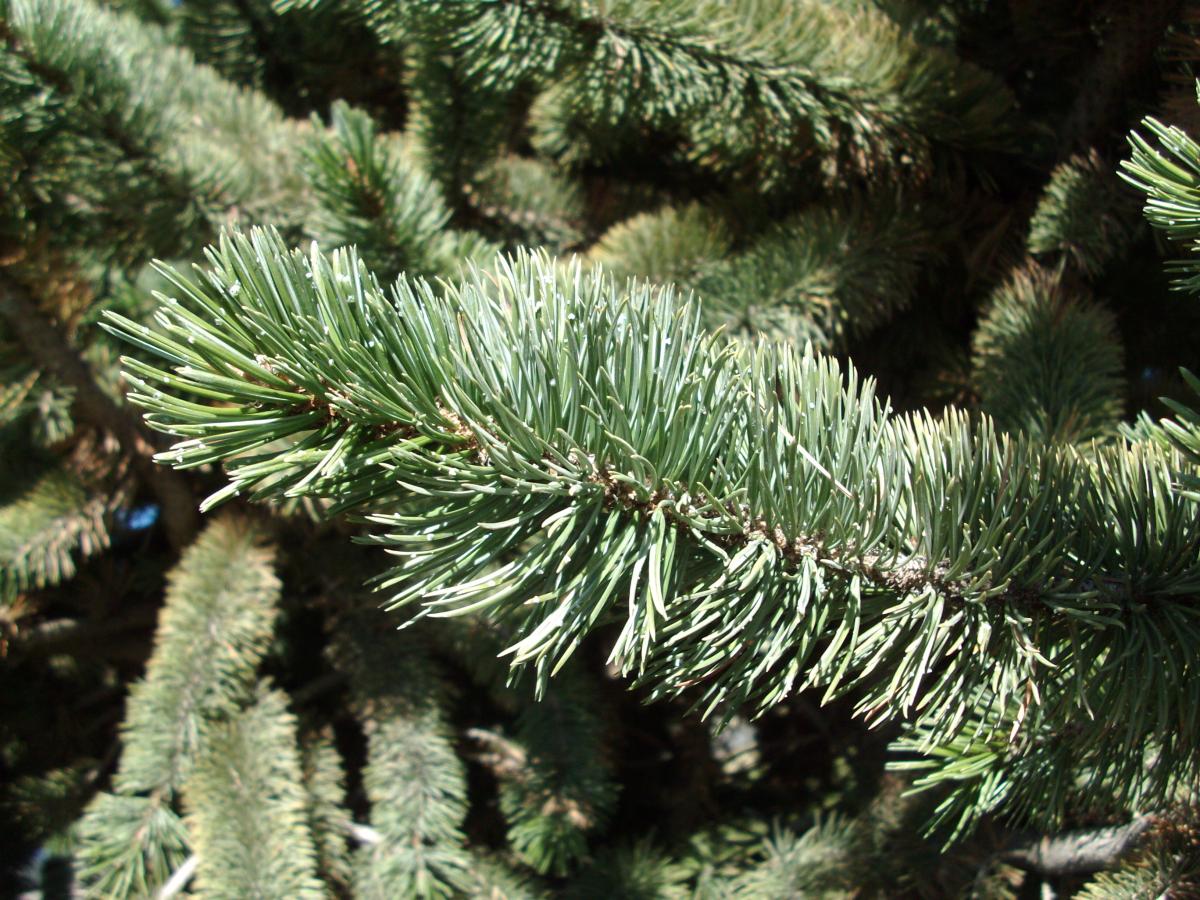
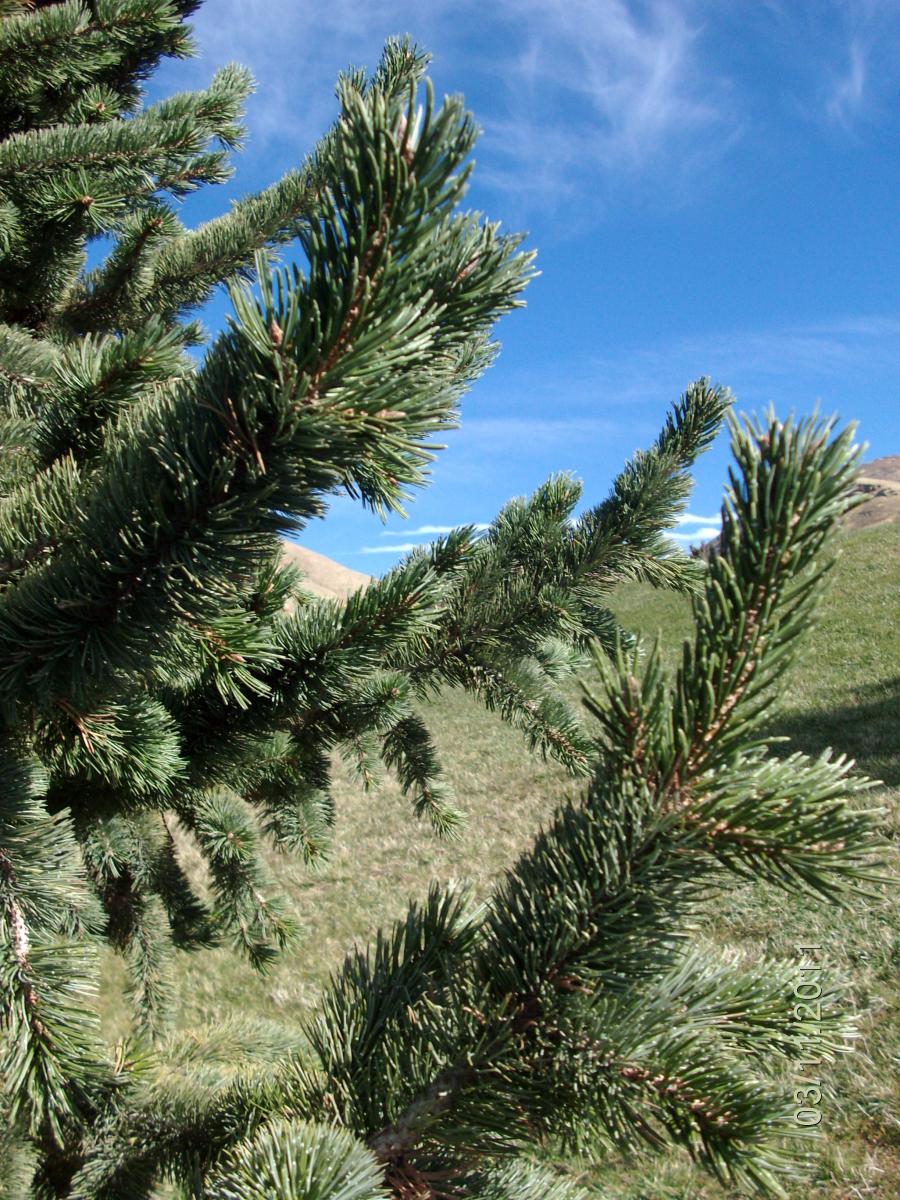


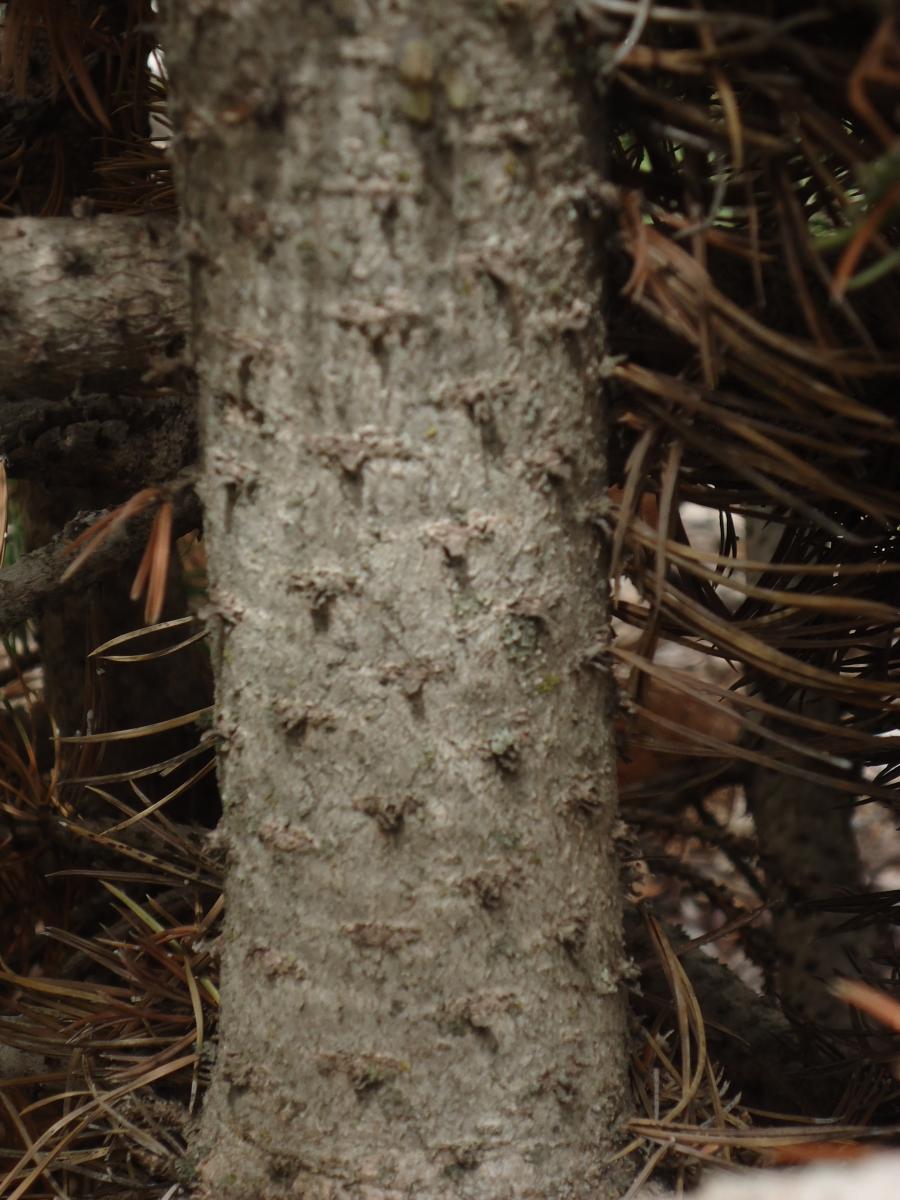
Pinus aristata
Leaves: Evergreen. Dark green, stiff, curved needles, 1 to 1½ inches long, in groups of 5. Usually lightly covered with white specks of dried resin. Branches look like long bottle-bushes.
Bark/Twigs: Thin, smooth, and gray-white bark on young stems. Furrowed and red-brown on older stems.
Flowers/Fruit: Inconspicuous flowers. Fruit is a woody, brown-red cone with a short stalk. Cone is about 3 to 3½ inch long, with thick scales and tipped with a long bristle. Seeds are small and winged.
Mature size and shape: Medium. 20 to 25 feet high x 15 to 20 feet wide. Irregular form.
General information/special features: Utah native. Plant in full sun. Shade intolerant. Prefers well-drained, dry, rocky soil. Deep roots. Drought tolerant. The Great Basin bristlecone pine (P. longaeva) has an exceptionally long life span. It is common for a bristlecone pine to live for thousands of years, and the oldest recorded specimen was aged at approximately 5,000 years old. The number of resin ducts in the two species distinguishes between the Great Basin, P. longaeva with one duct and the Rocky Mountain species, P. aristata with two. The Great Basin species appears to have a native range more in UT, NV, & CA while the Rocky Mountain species is more widespread in CO, AZ, & NM.
Landscape use and maintenance: Specimen tree. Slow growing rate. Low maintenance. Hard to transplant. The wood is very dense and resinous, and thus resistant to invasion by insects, fungi, and other potential pests. The tree's longevity is due in part to the wood's extreme durability.
USDA Hardiness Zone: 4 to 7
Family/Origin: Pinaceae – Pine. Native in scattered mountainous areas in the interior West, including Utah.
Campus Use: Uncommon. Can be found planted around the Student Life Center (Bld 110) and north of Public Saftey (Bld 301).
